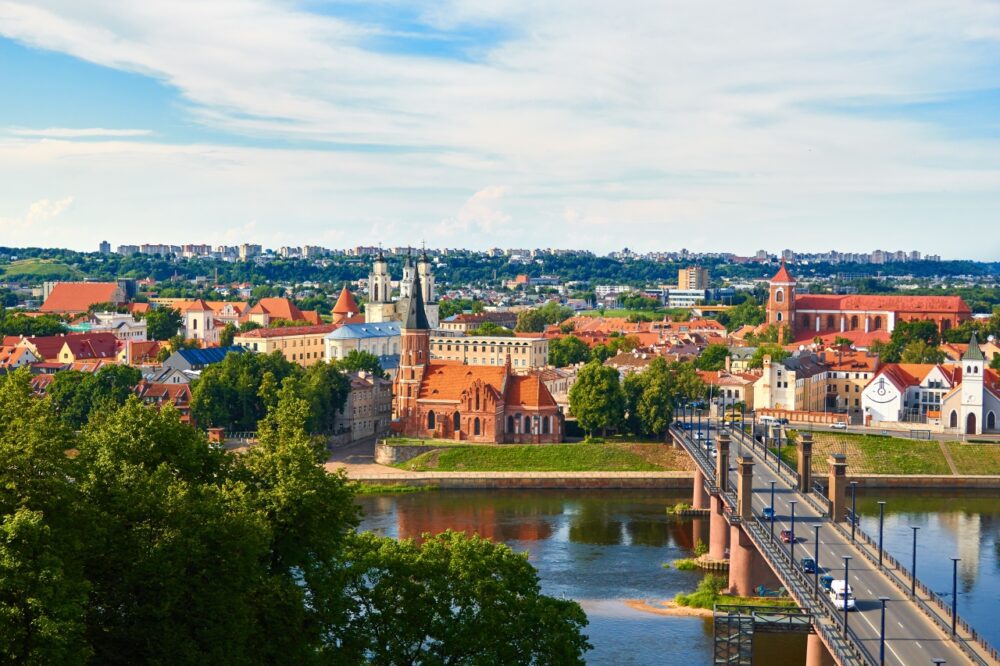
Is Kaunas worth visiting? Absolutely! When I first explored Kaunas, I was surprised by its blend of history, creativity, and youthful energy. From walking down Laisvės Alėja, Europe’s longest pedestrian street, to discovering stunning street art hidden across the city, Kaunas felt like a place where tradition and modernity meet in the most exciting ways.
Located at the confluence of the Nemunas and Neris rivers, Kaunas is Lithuania’s second-largest city and a former capital. Known for its well-preserved interwar architecture and vibrant cultural scene, Kaunas has been gaining recognition as a hotspot for art, design, and innovation. The city’s highlights include its medieval castle, charming Old Town, and quirky museums like the Devil’s Museum. With its relaxed atmosphere and rich history, Kaunas offers an experience that feels both authentic and inspiring. But is Kaunas worth visiting for you?
In this blog post, we’ll uncover the top 10 reasons why Kaunas should be on your travel list, from its unique architecture to its thriving arts scene. Plus, we’ll share travel tips to help you make the most of your visit. Keep reading to discover why Kaunas is one of Lithuania’s most dynamic destinations.
Table of Contents
Pros – Reasons You Should Visit Kaunas
1. UNESCO-Listed Modernist Architecture
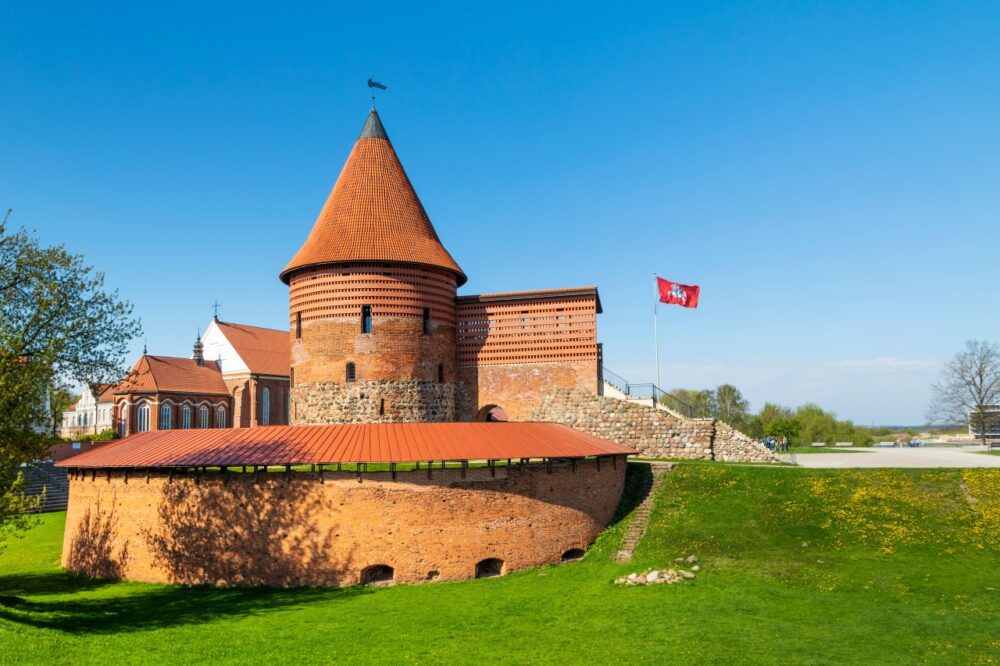
Kaunas is celebrated for its unique interwar modernist architecture, earning it a spot on the UNESCO World Heritage list. The city’s Freedom Avenue (Laisvės alėja) and surrounding streets are lined with striking buildings that showcase this distinctive style.
As I strolled through the wide, tree-lined avenue, I couldn’t help but admire the sleek lines and geometric designs of the facades. For architecture enthusiasts, the Kaunas Architecture Guide offers a self-guided route that takes you to the most iconic buildings, like the Vytautas the Great War Museum and the Bank of Lithuania Building.
2. Thriving Street Art Scene
Kaunas is home to a burgeoning street art movement, with vibrant murals adorning walls across the city. The Kaunas Street Art Festival has brought international artists to create stunning works, turning the city into an open-air gallery.
I was particularly taken with the “Wise Old Man” mural, which has become an icon of Kaunas. Armed with a map of street art locations, I spent an afternoon discovering hidden masterpieces in the city’s nooks and crannies. For art lovers, this is an unmissable experience.
3. Historic Old Town
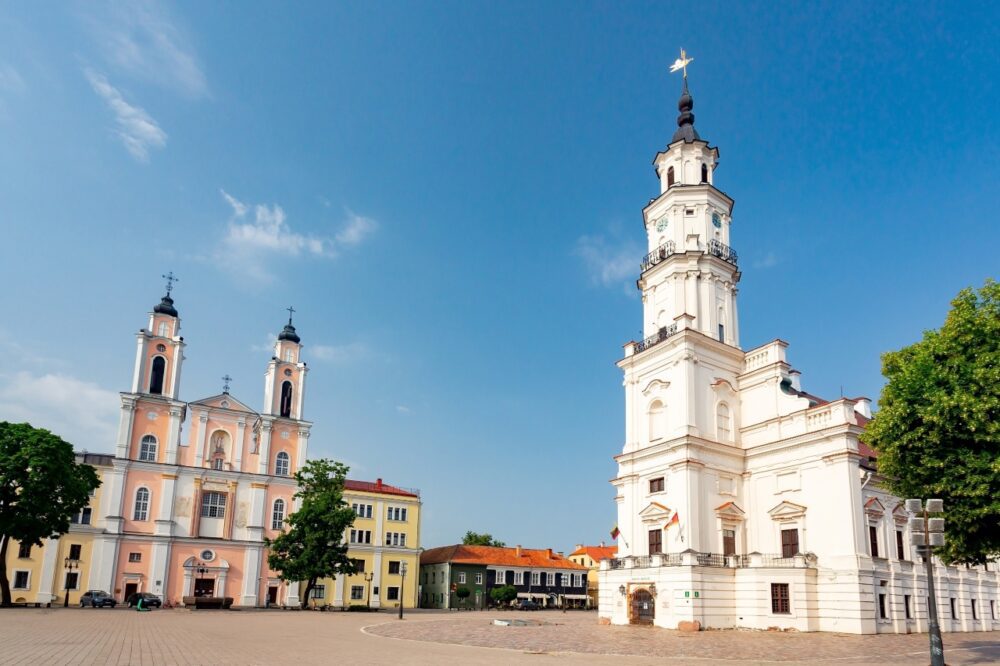
Kaunas’s Old Town, with its cobblestone streets and medieval architecture, is a delightful area to explore. Highlights include the Town Hall Square, known as the “White Swan” for its elegant design, and the House of Perkūnas, a Gothic gem.
I loved the relaxed atmosphere of the Old Town, where cafes and boutiques line the narrow streets. A visit to Kaunas Castle, a reconstructed medieval fortress, offered fascinating insights into the city’s past while providing picturesque views of the surrounding riverbanks.
4. Vibrant Cultural Scene
Kaunas has been named the European Capital of Culture 2022, and it’s easy to see why. The city is alive with theatre, music, and art events that showcase its creative energy. The National Kaunas Drama Theatre and the M.K. Čiurlionis National Art Museum are must-visits.
During my visit, I attended a contemporary art exhibition that highlighted the city’s modern edge. The locals’ passion for the arts is infectious, and the variety of events ensures there’s something for everyone.
5. Lush Green Spaces
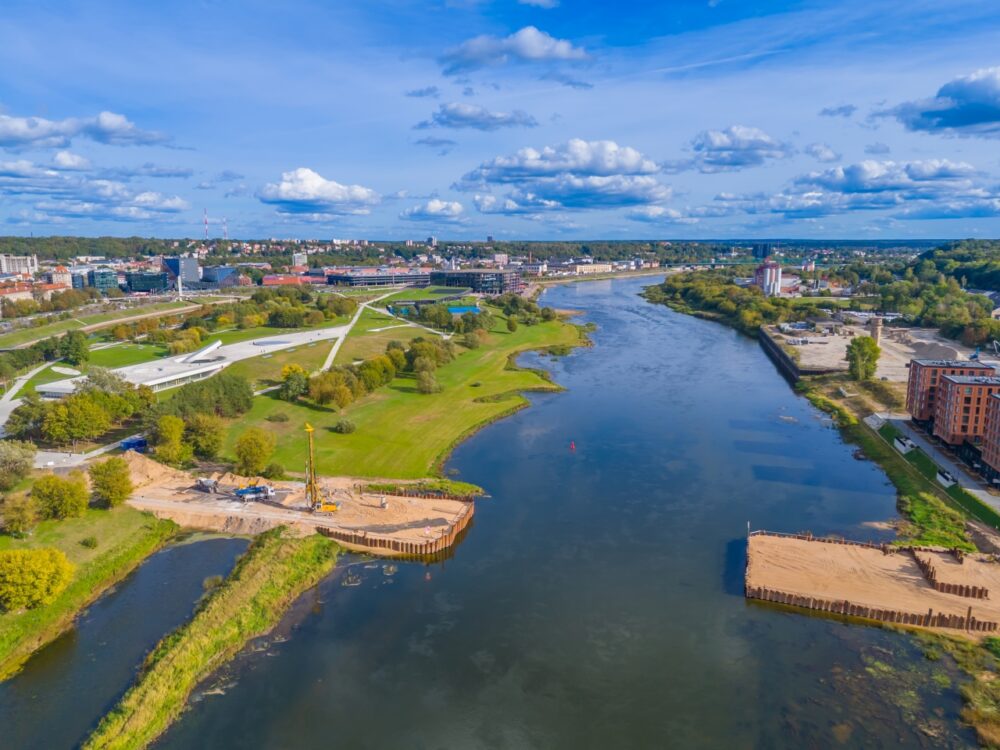
Kaunas is blessed with beautiful parks and natural surroundings. Nemunas Island, located in the middle of the river, is a serene spot for walking, cycling, or simply relaxing. The Oak Grove Park is another gem, offering shaded paths and peaceful picnic areas.
I spent a sunny afternoon cycling along the Nemunas River, enjoying the fresh air and scenic views. If you’re a fan of the outdoors, Kaunas provides plenty of opportunities to connect with nature.
6. Hearty Lithuanian Cuisine
The food scene in Kaunas combines traditional Lithuanian flavours with modern culinary trends. Classic dishes like cepelinai (potato dumplings) and škėčka (herring) are staples, while newer restaurants experiment with creative twists.
I dined at Uoksas, a contemporary eatery known for its seasonal menu and locally sourced ingredients. The combination of innovative dishes and traditional comfort food made Kaunas a delightful destination for foodies.
7. Budget-Friendly Travel Destination
Kaunas is an affordable destination compared to many Western European cities. Accommodation, dining, and attractions all offer excellent value for money.
I stayed in a boutique hotel in the city centre for a fraction of the price I’d pay in larger European capitals. Even meals at high-end restaurants were reasonably priced, making it easy to enjoy the city without stretching my budget.
8. Proximity to Nature
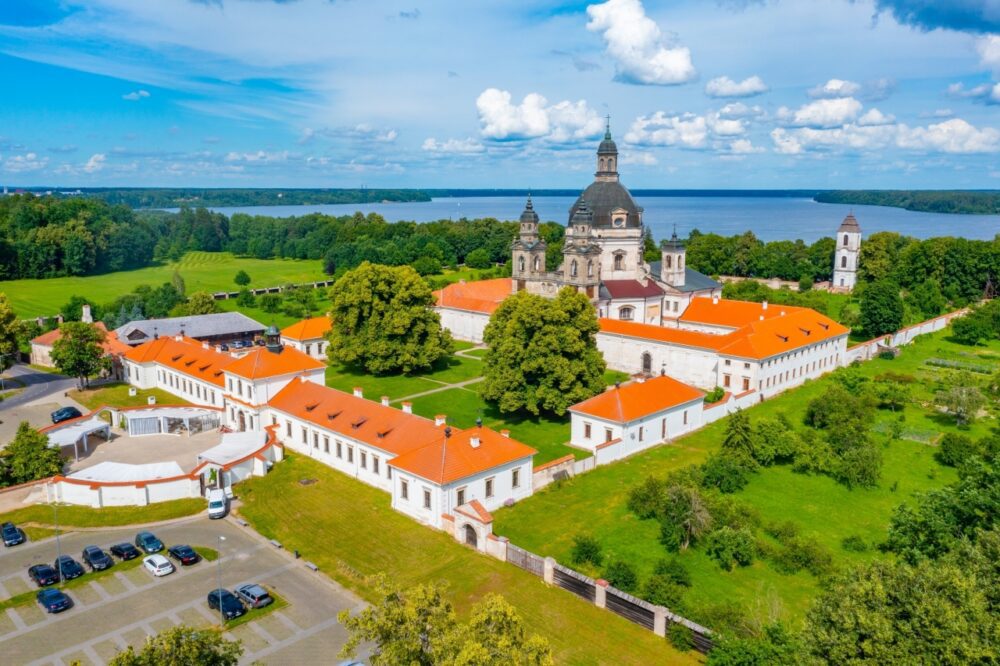
Kaunas is surrounded by stunning natural landscapes, making it a great base for day trips. The Pazaislis Monastery, set near a tranquil reservoir, is a peaceful retreat, while the Kaunas Lagoon Regional Park offers hiking and birdwatching opportunities.
I took a short bus ride to Pazaislis Monastery, where I admired its baroque architecture and serene atmosphere. For nature lovers, these nearby escapes add another layer to Kaunas’s appeal.
9. Compact and Easy to Navigate
Kaunas is a relatively small city, which means you can easily explore its highlights on foot or by bike. The city’s layout is straightforward, with most attractions within walking distance of each other.
I appreciated how easy it was to get around, whether I was wandering the Old Town or cycling to Nemunas Island. Public transport is reliable and affordable for longer trips, but walking is the best way to soak up the city’s charm.
10. Warm and Welcoming Locals
Lithuanians in Kaunas are known for their friendliness and pride in their city. Many locals speak English, especially in tourist areas, making it easy to strike up a conversation and get recommendations.
I had a memorable chat with a shopkeeper who shared her favourite spots in the city, including a hidden cafe that turned out to be a highlight of my trip. The warmth and hospitality of Kaunas’s residents added a personal touch to my visit.
Cons – Things to Consider When Visiting Kaunas
1. Smaller Scale of Attractions
While Kaunas has a lot to offer, its attractions are on a smaller scale compared to major capitals like Paris or Berlin. Some travellers might find that two or three days are enough to explore the city.
After three days in Kaunas, I felt I’d seen most of the main sights. However, if you enjoy a slower pace and digging deeper into local culture, Kaunas’s intimate feel can be a plus rather than a drawback.
2. Weather Considerations
Kaunas experiences cold winters and unpredictable weather during shoulder seasons. Rain and chilly temperatures can impact outdoor plans.
I visited in early spring, and while the blooming flowers were lovely, I encountered a few unexpected showers. Packing layers and a waterproof jacket is essential if you’re visiting outside of summer.
3. Limited Nightlife
While Kaunas has a few bars and clubs, the nightlife scene is relatively subdued compared to larger cities. If you’re looking for a bustling party atmosphere, Kaunas might not be the best fit.
I spent an evening at a cosy wine bar, which was perfect for a laid-back night out. While I enjoyed the relaxed vibe, party enthusiasts might prefer Vilnius for a more dynamic nightlife experience.
4. Language Barrier
While English is widely spoken in tourist areas, you might encounter language barriers in smaller shops or neighbourhoods. Lithuanian is the primary language, and not all locals are fluent in English.
A few basic phrases in Lithuanian, like “hello” (labas) and “thank you” (ačiū), went a long way during my visit. Most people I encountered were friendly and patient, even when communication required a bit of effort.
5. Fewer Iconic Landmarks
Kaunas lacks the instantly recognisable landmarks that draw visitors to cities like Paris or Rome. Instead, its charm lies in its modernist architecture, vibrant culture, and local experiences.
I found that Kaunas’s appeal was more about the overall atmosphere than specific must-see sights. If you’re seeking iconic landmarks, you might be underwhelmed, but those who enjoy exploring off-the-beaten-path destinations will find plenty to appreciate.
When to Visit Kaunas
The best times to visit Kaunas are spring (April to June) and autumn (September to October), when the weather is mild, and the city’s parks and riverside paths are at their most inviting. Summer (July and August) is lively, with warm weather and festivals like the Kaunas Jazz Festival and Kaunas City Days, offering a festive atmosphere. Winters in Kaunas are cold but offer a quieter charm, with cosy cafes and cultural attractions like the Kaunas Castle providing a warm refuge from the chill.
How to Get to Kaunas
Kaunas International Airport (KUN), located just 14 kilometres from the city, is the main gateway, serving European destinations with budget airlines like Ryanair. From the airport, buses and taxis offer affordable transport to the city centre in about 20 minutes. Alternatively, Vilnius International Airport (VNO), 100 kilometres away, offers more flight options, with frequent trains and buses connecting Vilnius to Kaunas in 1.5 hours. Kaunas is also easily accessible by Lux Express and other international bus services, as well as by train, making it well-connected to the rest of Lithuania and nearby countries.
Where to Stay in Kaunas
Kaunas offers a mix of accommodation options to suit various tastes and budgets:
- Luxury: City Centre – Stay near the iconic Laisvės Alėja, Europe’s longest pedestrian street. Options like Hotel Daugirdas and Kaunas Hotel provide upscale comfort in prime locations.
- Mid-range: Old Town – Perfect for history enthusiasts, close to the Kaunas Castle and Town Hall. Consider Best Western Santaka Hotel or Amberton Cozy Hotel Kaunas, both offering great value and style.
- Budget: University Area – Affordable stays like Hostel Lux and student accommodations cater to those looking for budget-friendly yet convenient options.
Getting Around Kaunas
Kaunas is easy to navigate, with most attractions in the Old Town and city centre within walking distance. For longer distances, the Kaunas Public Transport system of buses and trolleybuses is efficient and inexpensive, with tickets available from kiosks or via mobile apps. Cyclocity, a bike-sharing scheme, is a fantastic way to explore the riverside paths or cycle to nearby parks. Taxis and ride-hailing apps like Bolt are widely available but generally not necessary for short trips within the city. For a unique experience, consider a ride on the historic Žaliakalnis Funicular Railway, one of the oldest in Europe.
How Long to Spend in Kaunas
Two days is perfect for exploring Kaunas’s highlights, including the Old Town, Kaunas Castle, Vytautas the Great Museum, and the lively Laisvės Alėja. This timeframe allows time to sample local cuisine and explore the city’s thriving street art scene, including the Kaunas Ninth Fort Memorial. With an extra day, consider a trip to the Pazaislis Monastery or the nearby Kaunas Lagoon. Kaunas’s mix of history, culture, and modern creativity makes it a rewarding destination for a short but immersive visit.
Conclusion
So, is Kaunas worth visiting? Absolutely! With its fascinating history, vibrant street art, and charming Old Town, Kaunas offers something special for every traveller. Highlights like Laisvės Alėja, Kaunas Castle, and the city’s many museums make it a destination full of character. While it’s less touristy than Vilnius, that’s part of its appeal—it’s a place where you can experience Lithuania’s creativity and culture at a relaxed pace. If you’re ready to explore a city that blends old and new beautifully, start planning your trip to Kaunas today!
